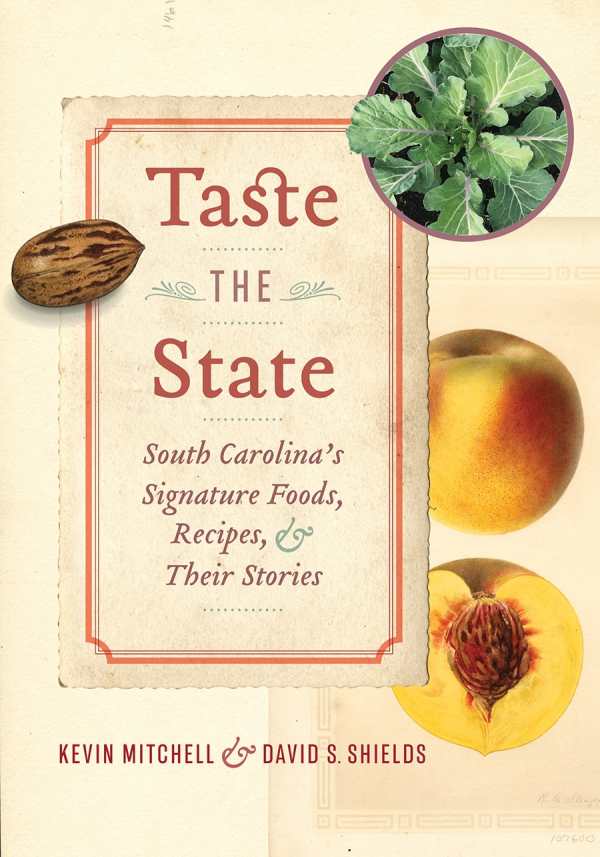Taste the State
South Carolina's Signature Foods, Recipes, and Their Stories
Chef Kevin Mitchell and Professor David S. Shields crisscross South Carolina geography and social history in Taste the State. Their alphabetical compendium of stories, recipes, and photographs champions the Palmetto State’s distinctive foods and unearths fresh information about traditional foodways and regional culinary history.
Native plants and fishes and heirloom crops are a special focus of the book, even when they have been overharvested or eradicated by disease, or have fallen out of favor, like freshwater turtles for cooter soup. Mitchell and Shields are reverent in describing how boys hawked strings of roasted chinquapins (a smaller native variety of chestnut) at railroad stations before an early twentieth-century blight wiped out most of the trees. They acknowledge current work by growers and producers to develop new breeding stocks and expand availability of these and other foods, like Guinea Squash and Carolina Gold Rice, encouraged by a strong revival of interest in Southern culinary heritage.
The noteworthy Low Country cuisine is represented in ample terms, with its distinctive rice and seafood dishes, but other state regions receive their due, too. There are entries about foods such as roast wild duck, Pigfoot gravy, and a variety of vegetable pickles. Historical recipes, and Chef Mitchell’s updated versions of signature recipes, are vibrant additions.
Mitchell and Shields’s extensive research results in important scholarship about the often under-heralded culinary contributions of Black American and Indigenous cooks, producers, and vendors. They are neat in summarizing how technological innovations, like refrigeration and the development of interstate transportation systems, influenced the way that South Carolinians grew and cooked their food over the years.
From chubby Palmetto Asparagus to the “cheap high” of Yaupon Tea, Taste the State serves up intriguing bits of South Carolina food history, resulting in an entertaining, edifying treat.
Reviewed by
Rachel Jagareski
Disclosure: This article is not an endorsement, but a review. The publisher of this book provided free copies of the book to have their book reviewed by a professional reviewer. No fee was paid by the publisher for this review. Foreword Reviews only recommends books that we love. Foreword Magazine, Inc. is disclosing this in accordance with the Federal Trade Commission’s 16 CFR, Part 255.


